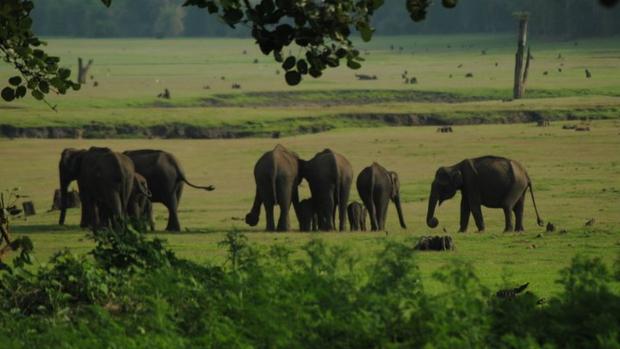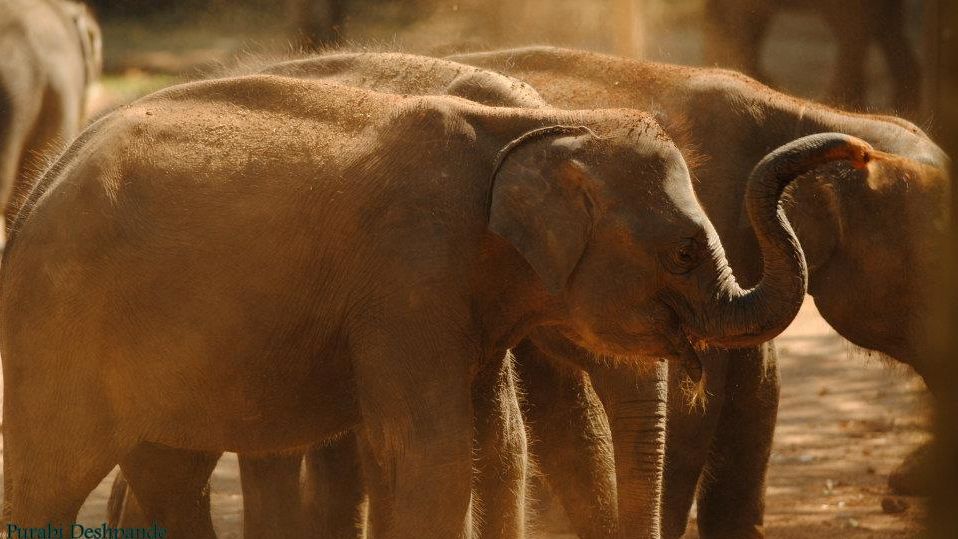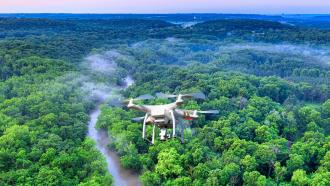
Photo : Purabi Deshpande / Research Matters
The largest land animal on the planet has a unique role to play in the ecosystem – distributing seeds of certain species of fruiting trees. No other wild or domestic herbivore can step into the elephant’s large shoes, finds a recent study. The new findings goad us to rethink the seriousness with which we treat elephant conservation endeavors.
"We conserve elephants because they are intelligent, fascinating, beautiful, and an important link to our national and global heritage”, says Dr. Nitin Sekar from Department of Ecology and Evolutionary Biology, Princeton University and Center for Ecological Sciences, Indian Institute of Science, first author of the paper. “However, our research provides further evidence that when we lose unusual species like the Asian elephant across parts of their range, such loss can have a local or regional effect on how an ecosystem functions; other species will not always automatically pick up the slack”.
It is crucial for a mother tree to disperse her seeds far and wide from where she is. Saplings that germinate from seeds just beside the mother tree may not receive enough sunlight and will be forced to compete for the nutrients amongst themselves. Also, a high density of saplings at one place may attract herbivores. Fruit eating animals and birds, called frugivores, do this service by eating fruits, travelling far and defecating seeds contained in them. Their digestive system also is peculiarly friendly to the seeds and at times aids germination.
For this mutually beneficial exercise, large bodied herbivores are particularly suitable. They consume large amounts of fruits, and carry a large number of seeds. An elephant particularly has a seed-friendly digestive physiology. And they also move around for kilometers at a time, thus dispersing seeds far and wide.
But this scenario could change. “Local extinction (or extirpation) could more easily happen in a variety of settings across South and Southeast Asia, especially as elephants lose habitat to unplanned development, or if poaching for elephants ramps up to meet new demand for elephant parts”, says Sekar.
The authors used seed dispersal data for three tree species – Artocarpus chaplasha (Chaplash), Careya arborea (Slow Match Tree) and Dillenia indica (Elephant apple) at the Buxa tiger reserve, and carried out simulations to estimate what would happen if elephants disappeared. Using the model they could ask questions like, what proportion of the seeds was dispersed by elephants? And if elephants were to be extirpated, how would it affect the quantity and distance of seed dispersal? The models show that large fruited trees do not fare well in areas where mega-herbivores like elephants have gone extinct, because of limited dispersal of seeds. Other tree species which have the advantage of having small seeds or other modes of dispersal via wind or water, may get established. This may affect other animals too, which are dependent on fruits for their food, thus changing the biological diversity of the forest and their attendant ecological functions in the long run.

The results they obtained shows that elephants are one of the top two seed dispersers of the three species examined. Elephants dispersed about one-third of the seeds of Artocarpus chaplasha (28%) and Careya arborea (33%), and nearly three-fourths of Dillenia indica seeds (71%). Even if all the seeds dispersed do not germinate, these numbers indicate the tremendous role elephants play in seed dispersal.
Though Macaques (monkeys) also eat a considerable amount of fruits, they are very messy feeders and in contrast to elephants, drop the seeds near the tree itself while feeding. This does not help the primary objective of the mother tree at all. One may argue that other animals like Gaur and domestic cattle -- which often are becoming a too common sight in forests -- may compensate for the absence of elephant. But the model paints a different picture.
Domestic cattle to begin with, chew seeds and destroy them during feeding; they do not disperse seeds more than 5 km. Gaur seldom carry seeds for more than 10 km. Elephants, on the other hand, dispersed seeds up to 40–50 km. Moreover, the digestive system of domestic cattle does not suit D.indica seeds. “Dillenia indica has a really hard, thick exterior (mesocarp, to be precise) that only elephants can easily eat” says Sekar. Elephant extirpation would lower D. indica seed dispersal to one – quarter.
We hope there never will come a day when we have to say an obituary to this fascinating, and charismatic animal. We may say, while writing an obituary, that the person diseased was “irreplaceable”, rhetorically. In case of elephants, it may just turn out to be literally true. “If we lose species like elephants across 90% of their historical range, that could mean large swathes of land where many other species are missing an ecological partner. So if we want functioning and resilient ecosystems, it can help to make a special effort to conserve species that science suggests are functionally unique across their range. Otherwise, we might gradually find that we are losing our biodiversity and the natural wealth that comes with it” Dr. Nitin signs off.






